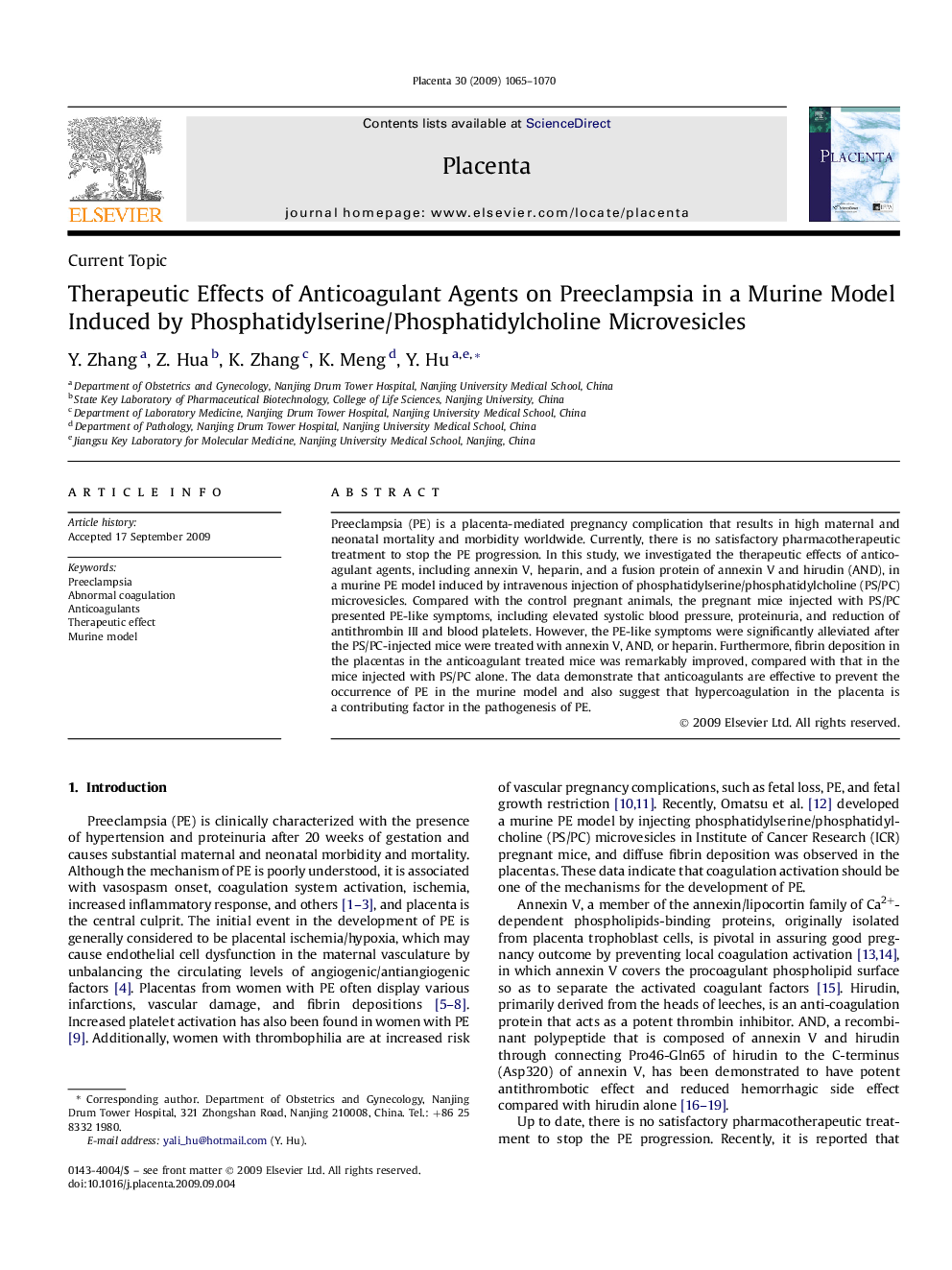| کد مقاله | کد نشریه | سال انتشار | مقاله انگلیسی | نسخه تمام متن |
|---|---|---|---|---|
| 2789675 | 1568572 | 2009 | 6 صفحه PDF | دانلود رایگان |

Preeclampsia (PE) is a placenta-mediated pregnancy complication that results in high maternal and neonatal mortality and morbidity worldwide. Currently, there is no satisfactory pharmacotherapeutic treatment to stop the PE progression. In this study, we investigated the therapeutic effects of anticoagulant agents, including annexin V, heparin, and a fusion protein of annexin V and hirudin (AND), in a murine PE model induced by intravenous injection of phosphatidylserine/phosphatidylcholine (PS/PC) microvesicles. Compared with the control pregnant animals, the pregnant mice injected with PS/PC presented PE-like symptoms, including elevated systolic blood pressure, proteinuria, and reduction of antithrombin III and blood platelets. However, the PE-like symptoms were significantly alleviated after the PS/PC-injected mice were treated with annexin V, AND, or heparin. Furthermore, fibrin deposition in the placentas in the anticoagulant treated mice was remarkably improved, compared with that in the mice injected with PS/PC alone. The data demonstrate that anticoagulants are effective to prevent the occurrence of PE in the murine model and also suggest that hypercoagulation in the placenta is a contributing factor in the pathogenesis of PE.
Journal: Placenta - Volume 30, Issue 12, December 2009, Pages 1065–1070